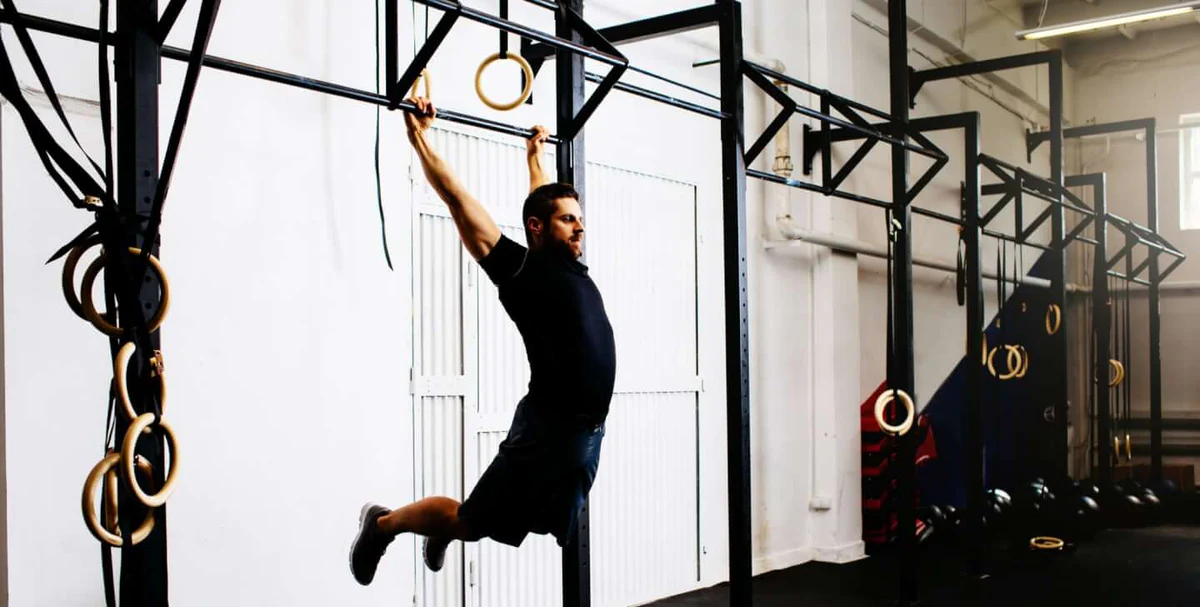Are You Making a Pull-Up Mistake? Here are 4 Common Ones

Are you making a pull-up mistake? Pull-ups are one of the world’s best exercises, but if you don’t do it correctly, you put yourself at risk for injury.
There’s beauty in the simplicity of a pull-up bar. Unlike some complicated and newfangled gym equipment, it’s restrained and timeless, an antidote to pretension of trendy workouts.
It’s also deceptively challenging. “The nature of a pull-up seems simple—you grab a bar and pull yourself up,” says Chris Ryan, C.S.C.S., founder of Chris Ryan Fitness in New York City. But do it wrong and you risk wasting energy or injuring yourself.
The perfect pull-up looks like this: You grip the bar with hands slightly wider than shoulder-width apart and your palms facing away from you. (If your palms face toward you, that's a chin-up.)
Hang with your legs pointed straight at the floor, with your ribcage pulled in and your lats stretched out long. As you lift, your elbows should stay close to your sides, and when you’re done, you should lower slowly until your arms are once again fully extended.
Simple, right? Yet people still blow it all the time. So here are the mistakes Ryan sees most often, along with your new pull-up strategy for building more muscle without causing injury.
Pull-Up Mistake #1: You don’t pull yourself up high enough.
If done properly, pull-ups should lead to big gains in your shoulders. But if your lift ends as soon as your chin touches the bar, then you’re not fully engaging.
The fix: With each lift, the tops of your shoulders should clear the bar. If you’re unsure, aim to tap your chest—that ensures that you’re reaching the proper altitude. It also helps you to “pinch” your shoulders, Ryan says, which is a critical sign of proper form. Need a visual? Imagine squeezing a pen between your shoulder blades. That’s the pinch you’re going for.
Pull-Up Mistake #2: You try to do too many.
It’s impressive to brag about doing 10 or 20 pull-ups. But if you’re aiming too high, then you're likely compensating by limiting your range of motion, which means all the energy is coming from your elbows and forearms. Not only does that limit your potential for muscle growth, but it also leaves you open to injury, says Ryan.
The fix: Set a lower goal, with the primary focus on form. “You need to look for quality over quantity,” Ryan says. One killer pull-up with excellent form is much better than a bunch of wild ones that don't yield results. The next time you step up to the bar, cut your number in half, and see how much burn you can create by moving slow and conscientiously.
Pull-Up Mistake #3: You jump in too quickly.
The pull-up bar’s simplicity gives off the false impression that it’s a great beginner exercise. The truth is, lifting your bodyweight puts an intense load on your muscles, which some people simply aren't ready for. If you can’t do them properly, you’ll either end up discouraged or hurt.
The fix: Start with a test. Hang from the bar in a hollow-body potion, with your core engaged and your ribs pulled in. If you can last for a full minute, then you're probably ready. If not, hang for as long as you can, and challenge yourself to add 5 seconds the next time you're at the gym. Keep adding time until you're at a minute, and in the meantime, build strength by using the lat-bar cable machine or a pull-up machine, both of which allow you to lift less than your full bodyweight.
Pull-Up Mistake #4: You’re kipping before your time.
If you don’t know what kipping is, don’t worry. You don’t need it. But for the curious: It’s a sort of swinging-motion used by CrossFitters to bang out more pull-ups in a short amount of time. It’s an impressive move, but think if it as an athletic challenge rather than an essential workout move.
The fix: Until you’re a master of the traditional pull-ups and you’re looking for new physical challenges, there’s no reason to try the kipping version. If your goal is to build strength, then stick to the basics. “Build a solid foundation of grip, core, back, and shoulder strength first,” Ryan says. “Getting a labral tear or flailing around like a fish isn’t going to do you any good.”
